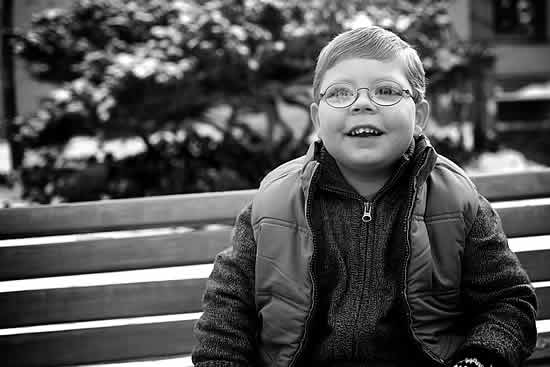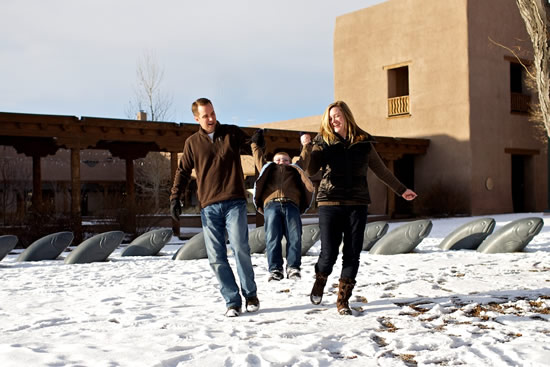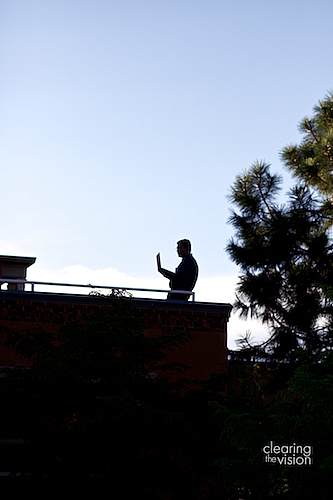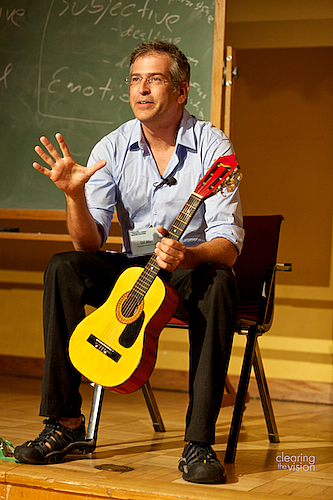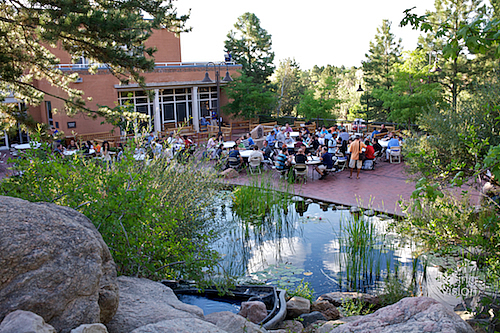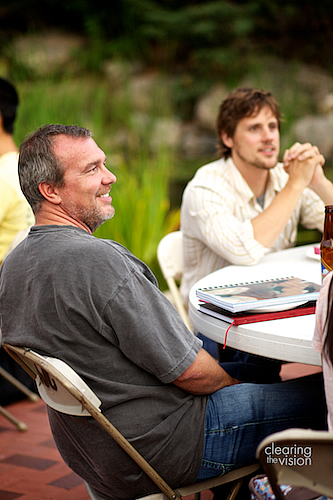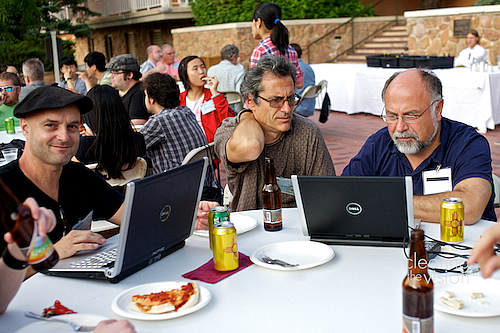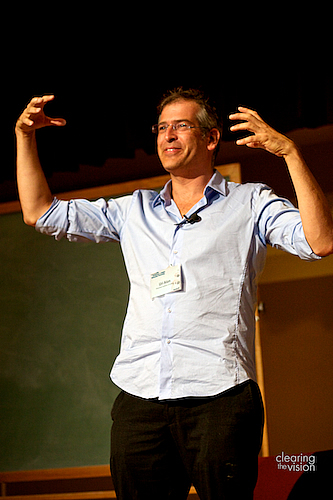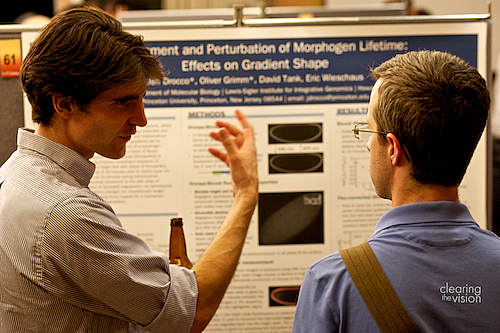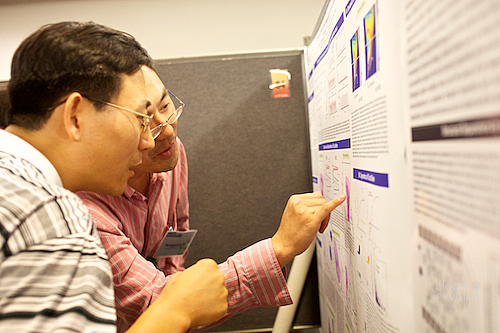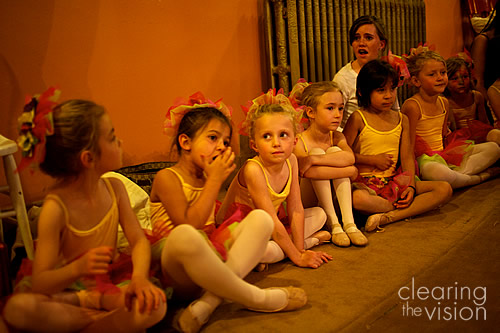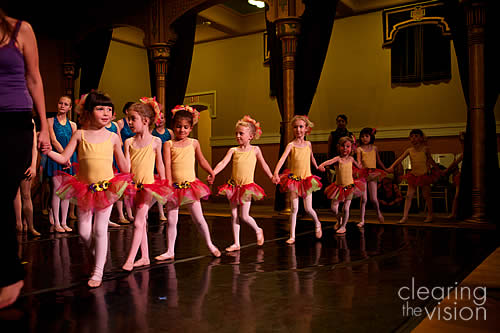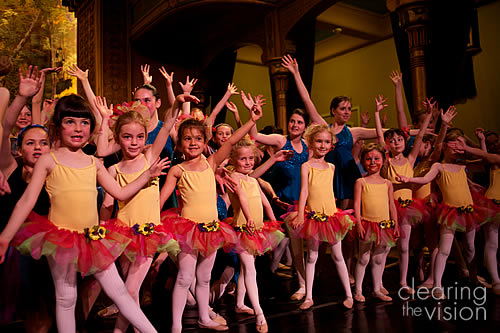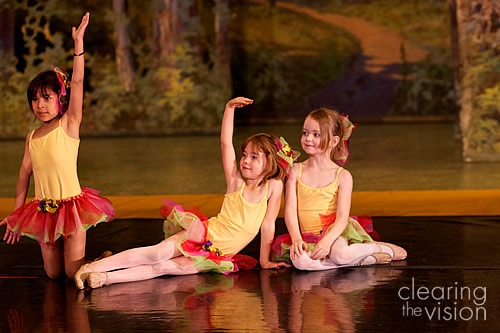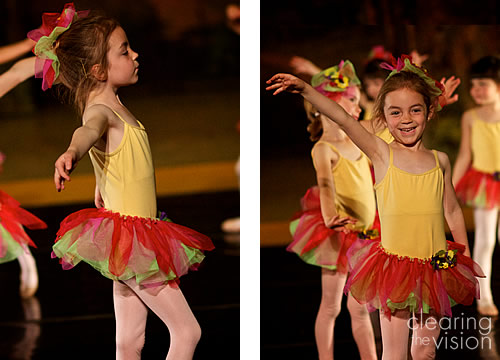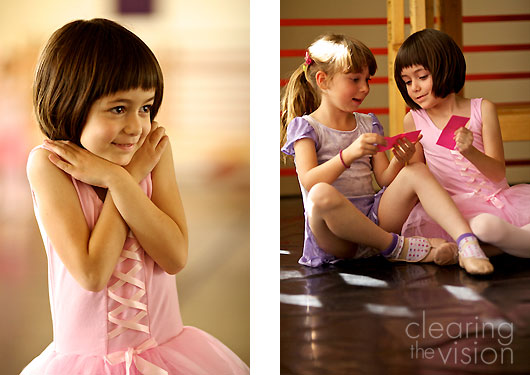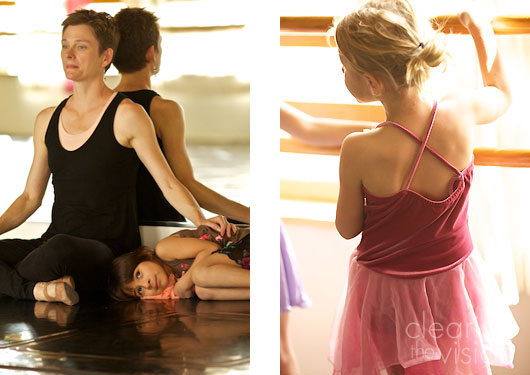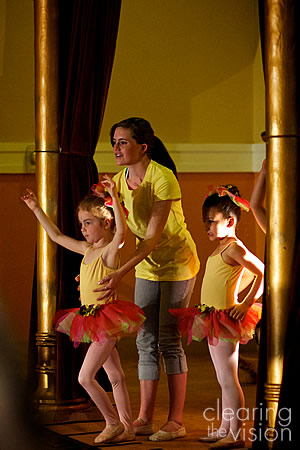
Recently I took photographs at my daughter’s ballet class, and really enjoyed the experience.
So when I arranged to take photographs of her class’ dress rehearsal and performance, I was looking forward to it immensely, but it threw up a new set of challenges that I had to deal with.
The practice studio had been bright, spacious and very easy to shoot in. I could follow the girls around, changing my point of view to get the light I wanted or minimize some background clutter.
The location for the performance on the other hand (the theatre of the Scottish Rite Temple in Santa Fe) was dark and cramped (at least around the stage).
Gorgeous and fascinating. no doubt, but dark and I couldn’t move around at all.
At least for the dress rehearsal, I was able to squat down just off the stage, but that’s where all the girls from the other classes were waiting, so it was all a bit tight.
Allegra Lillard, the amazing Director of Dance for Joy, kept everything moving smoothly and energetically, but like any dress rehearsal there was some waiting around.
Even sitting up against a wall waiting for their turn, there’s something hugely endearing about little girls in full ballet outfits. My daughter’s class were models of patience until it was time to practice the grand finale – the first time they’d been up on stage with all the other (older) classes.
They were a little nervous going on to the stage, but soon reveled in their place in the limelight.
Practicing their own number came next, and they ran through it like small seasoned professionals.
If the rehearsal was tricky, then getting shots on the day was going to be even harder.
The house lights would be down, so the gorgeous space was even darker, and I was confined to my seat in the fourth or fifth row.
But I brought the camera anyway, and hoped for the best – the rich warm stage set and lavish surroundings were too good to miss, when combined with little ballerinas.
The ratio of keepers to rejects wasn’t that great, but I was very happy with those I got.
Four tips for capturing ballet
1) Choose your moment – in any performance, there are moments of stillness that are worth looking out for.The image above left captures a point when my daughter had momentarily struck a pose – it was the end of one gesture, just before the start of another move, and as such it has a strength that works well. It’s certainly possible to get a great shot in mid-twirl or run (and these would communicate more dynamism than poise), but it was the quieter moments that appealed to me (and they’re easier to get right, especially if the light’s dodgy).
2) Tell the whole story – With children, you want to tell the story of their whole experience, not just the performance. So the shots of waiting around, being ushered onto the stage, or their big smile afterwards at the curtain call are all as valuable as your images of their performance itself. With older children or adults, you might want to emphasize the performance itself (their technique or form, or timing with the other dancers). But with younger kids, the imperfections of their performances make their personalities shine through.
3) Think both wide and narrow – It’s tempting to think you should just go with the longest lens you have, but you might miss some good compositions that way. I shot with my now-standard combination of two bodies, one with with a 35mm f/2 and one with an 85mm/f1.8 on the other. It partly depends how far you are from the stage as to what your focal length options should be, but you’ll want to be able to capture most of the width of the stage for the shots of the whole group. You’ll also want enough length for picking out individual poses and expressions.
4) Keep the shutter speed as high as you can – to freeze the movement (unless you’re going for a nice deliberate blur to communicate movement), then you’ll want to keep the shutter speed above 1/100 at the slowest. Some of the above images were shot at around 1/100 sec f/2 or f/3 at ISO 1000, with the ISO being pushed up to 4000 for some of the performance shots. I’ll take some digital noise on an otherwise sharp image than a noise-free shot of messy blur. So bump up the ISO and/or shoot as wide open as you can (i.e using a lower f-number to let in more light)
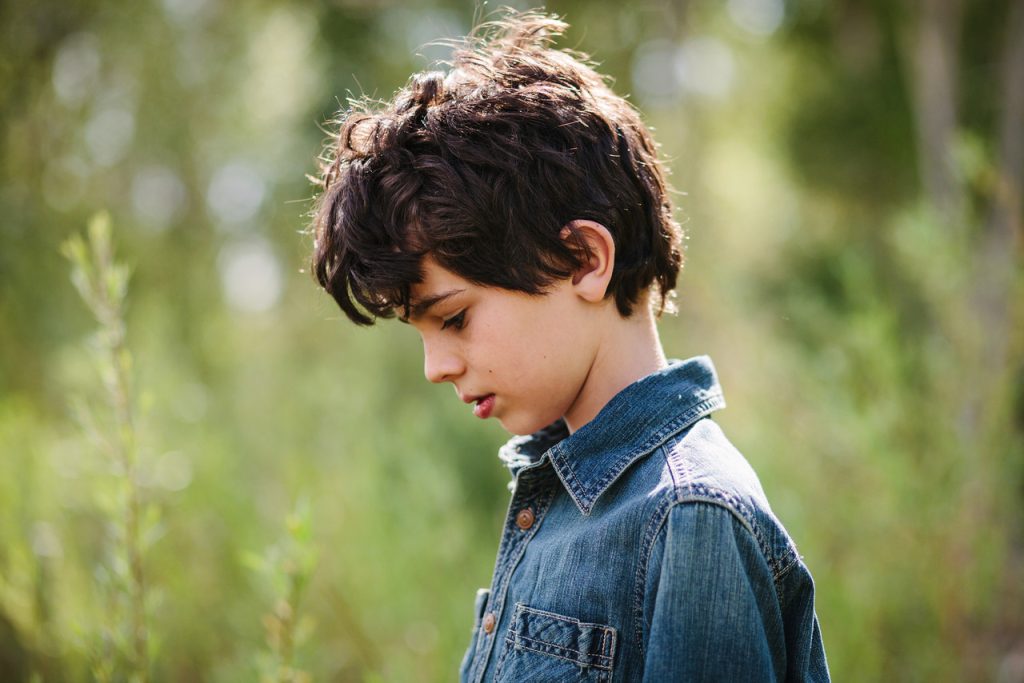
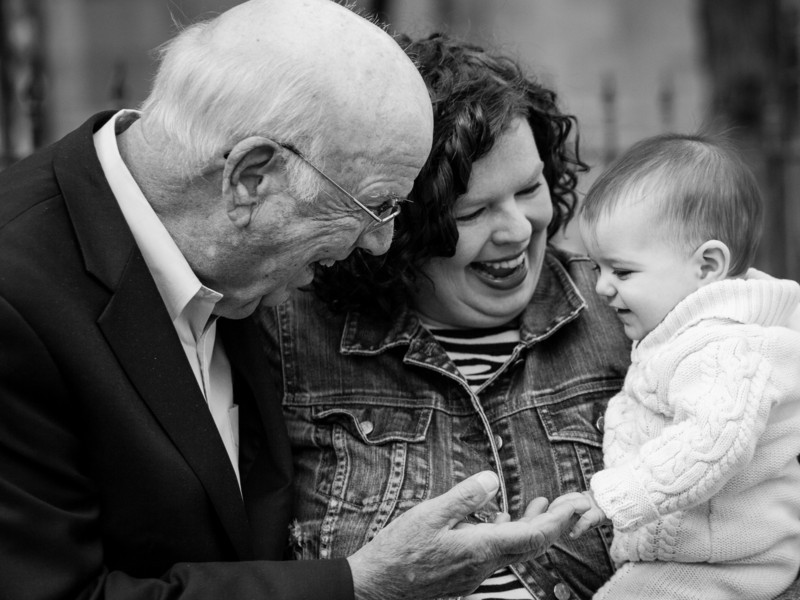 Recently, I’ve had several jobs where I’ve been photographing grandparents, parents and kids – often families that are here in Santa Fe on vacation.
Recently, I’ve had several jobs where I’ve been photographing grandparents, parents and kids – often families that are here in Santa Fe on vacation.

 Children’s photography to me is something that’s important but not pressing. It’s not like there’s a leak in the bathroom and you have to call the plumber right away, but in the end you’ll be very glad you’ve got the images when the kids are all grown and you’ve moved house.
Children’s photography to me is something that’s important but not pressing. It’s not like there’s a leak in the bathroom and you have to call the plumber right away, but in the end you’ll be very glad you’ve got the images when the kids are all grown and you’ve moved house.
